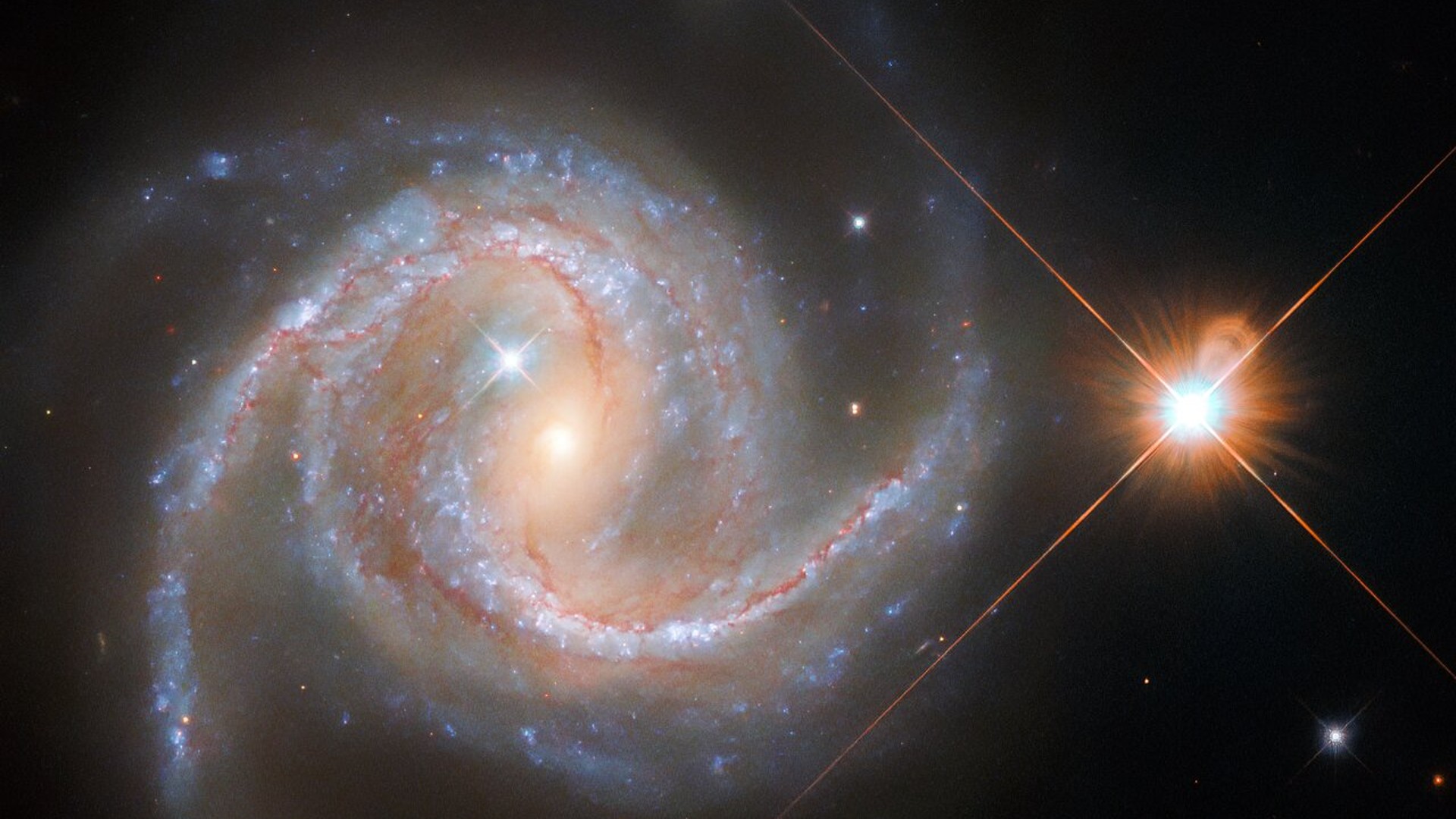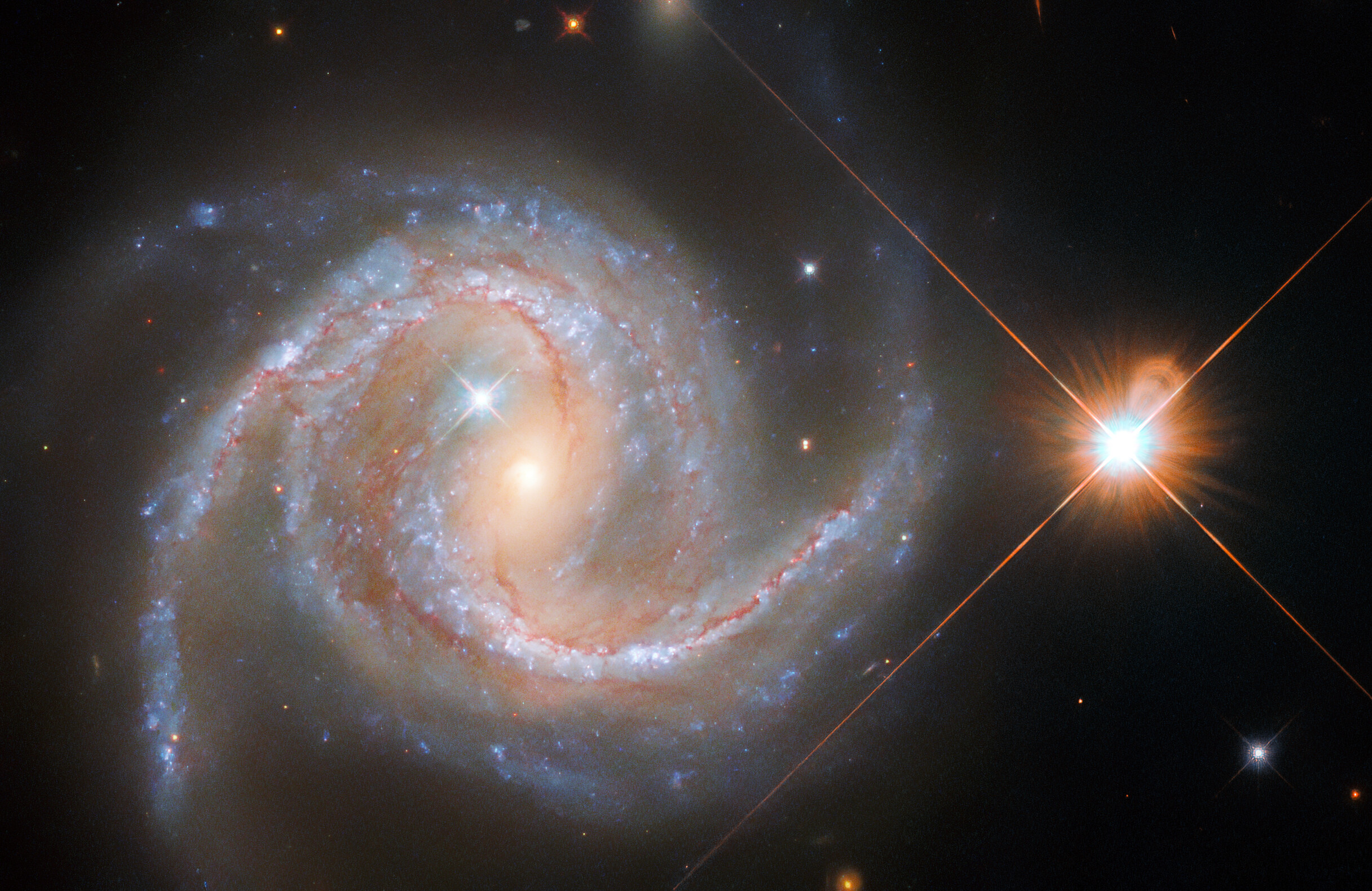Milky Way stars photobomb picturesque spiral galaxy in stunning Hubble photo
This galaxy is located 300 million light-years away, but the star to the right is much closer to Earth.

The Hubble Space Telescope captured the sight of a beautiful spiral galaxy, adorned with the sparkle of two nearby stars.
Galaxy NGC 5495 lies 300 million light-years from Earth, far behind the jewel-like celestial bodies to the top-left of the galaxy's center, and another to the right. These are stars within the Milky Way, Earth's home galaxy that, like NGC 5495, is a spiral galaxy.
According to the European Space Agency (ESA) — which wrote a description of the "stately sweeping spiral arms" of the galaxy in a new NGC 5495 image published on Sept. 26 — 60% of galaxies are spiral galaxies. This means that most of the stars in the universe are contained within a galaxy like our own, or like the one seen in the new Hubble image.
Related: Hubble telescope spies a cosmic 'spider web' containing clues to dark secret
ESA officials write that NGC 5495 is a Seyfert galaxy. These are galaxies with activity at their core. The most extreme version of an active galactic nucleus (AGN), called a quasar, is the brightest object in the known universe. This sort of glowing galactic heart is powered by the might of a supermassive black hole, which astronomers believe lie at the center of most if not all galaxies in the cosmos.
When these gravity pits accrete a lot of material around its outside, the material heats up and begins to glow. Galaxy NGC 5495 isn't in the quasar category, but it's still considered a churning AGN.
Galaxy NGC 5495 is also lovely to behold because it's conveniently oriented face-on, allowing its core and spiral arms to be clearly visible. Although it's not too visible from this perspective, spiral galaxy NGC 5495 is probably enveloped in a halo that lies just above and below the galactic disk. For reference, a halo is the hazy glow that sandwiches the band of the Milky Way that appears in the night sky.
Breaking space news, the latest updates on rocket launches, skywatching events and more!
Astronomers think spiral galaxies eventually evolve into elliptical galaxies, bodies with older stars and less gas.
Follow Doris Elin Urrutia on Twitter @salazar_elin. Follow us on Twitter @Spacedotcom or on Facebook.

Doris is a science journalist and Space.com contributor. She received a B.A. in Sociology and Communications at Fordham University in New York City. Her first work was published in collaboration with London Mining Network, where her love of science writing was born. Her passion for astronomy started as a kid when she helped her sister build a model solar system in the Bronx. She got her first shot at astronomy writing as a Space.com editorial intern and continues to write about all things cosmic for the website. Doris has also written about microscopic plant life for Scientific American’s website and about whale calls for their print magazine. She has also written about ancient humans for Inverse, with stories ranging from how to recreate Pompeii’s cuisine to how to map the Polynesian expansion through genomics. She currently shares her home with two rabbits. Follow her on twitter at @salazar_elin.

